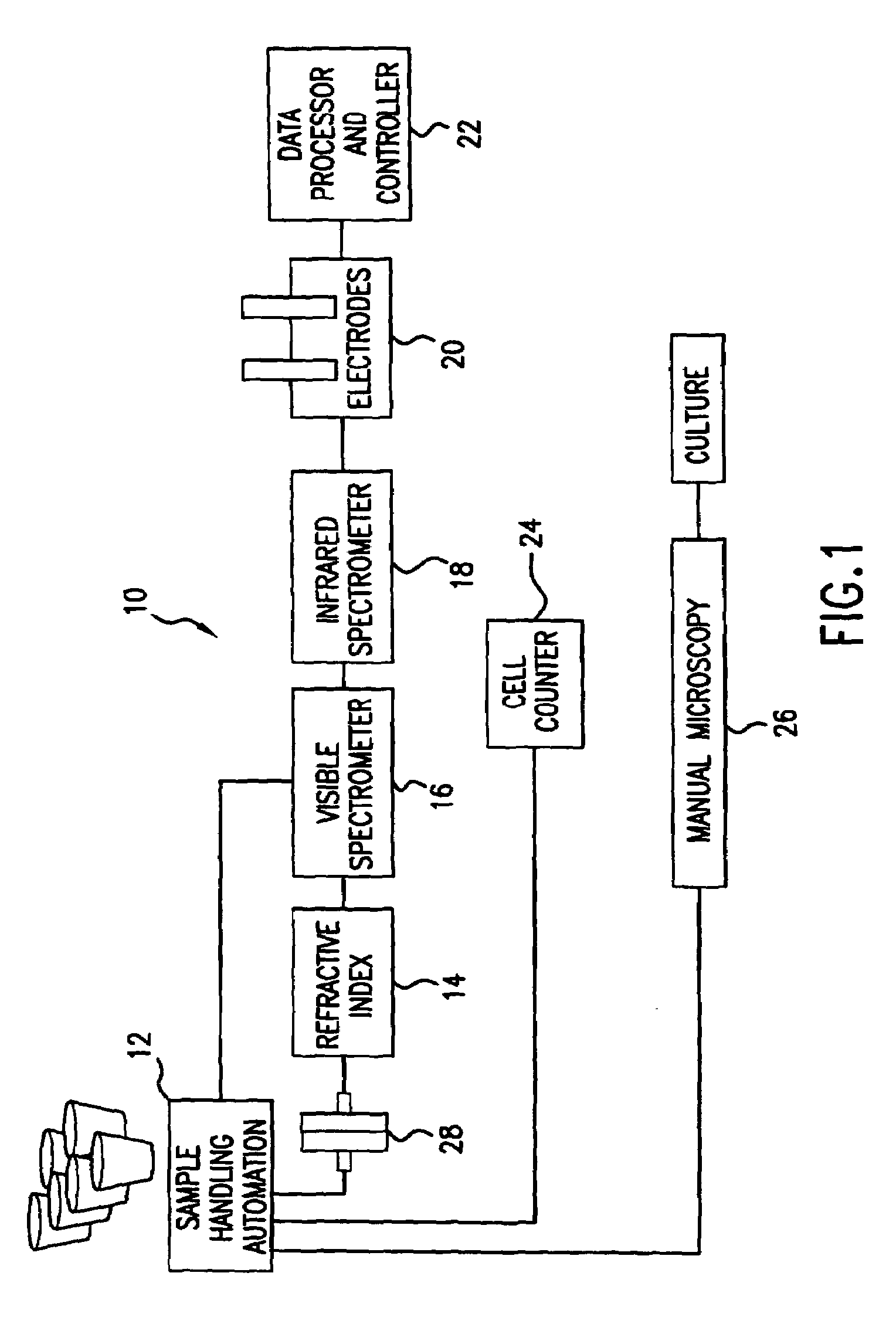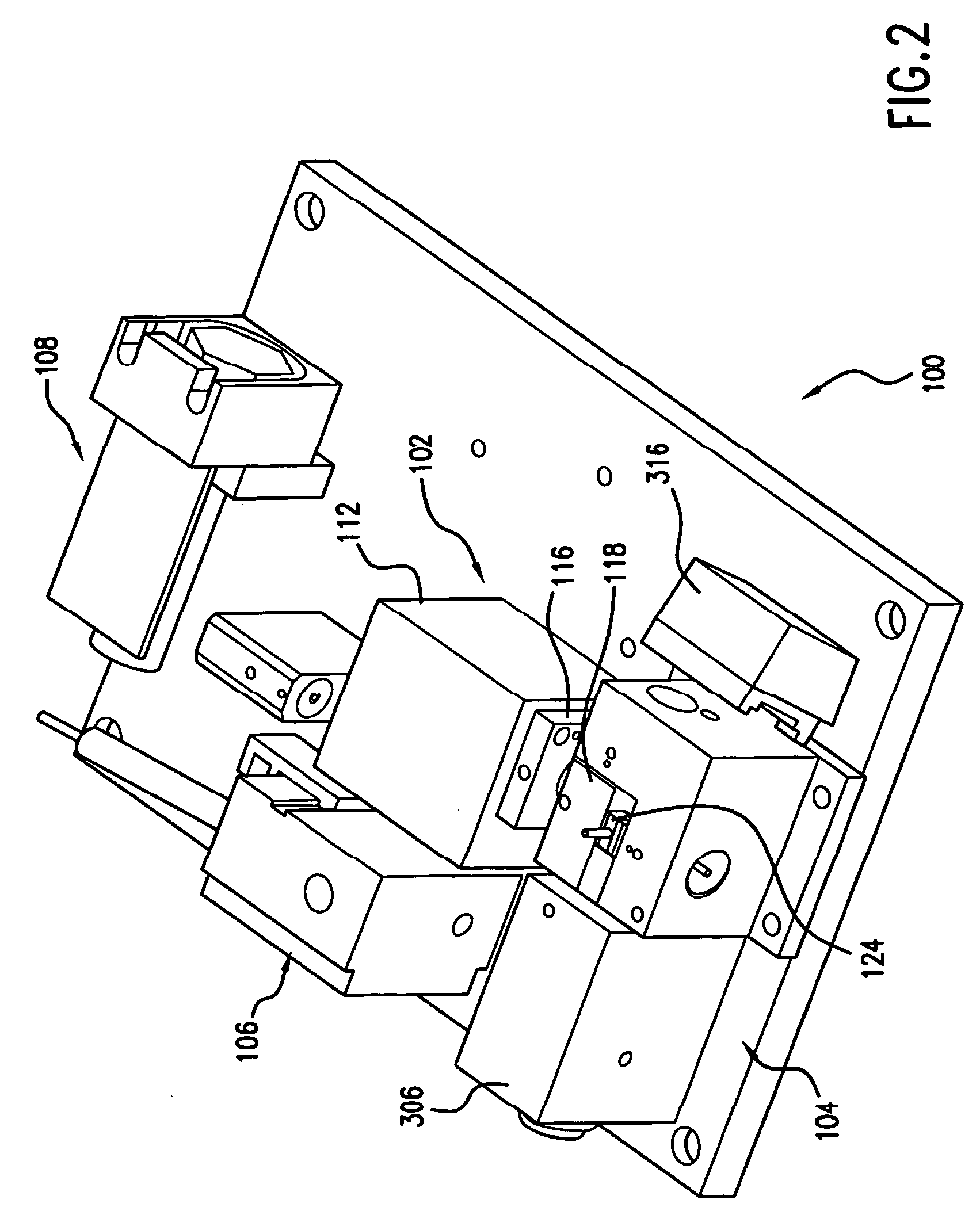Reagentless analysis of biological samples by applying mathematical algorithms to smoothed spectra
- Summary
- Abstract
- Description
- Claims
- Application Information
AI Technical Summary
Benefits of technology
Problems solved by technology
Method used
Image
Examples
example 1
[0279]This example illustrates an integrated system comprising a device that is capable of not only performing reagentless urinalysis but also of using reagents when desired. The reagentless urinalysis system can be coupled to a system that uses reagents to further exploit the advantages of the reagentless system. Protection of result integrity is a concern regardless of the diagnostic device employed. Result integrity could be compromised intentionally or unintentionally. Adulteration of urine samples for drug-of-abuse screening is an example of intentional attack on the result integrity by the sample provider. Dilution of a urine sample by means of alcoholic beverage consumption or diuretic medicine use is an example of unintentional compromise of result integrity. A marker, such as creatinine, which does not break down or is not significantly filtered by the kidney into urine, serves well for marking change of concentration of analyte as a function of change of urine volume. Thus...
example 2
[0285]This example illustrates an optical system and an integrated system for detection of nephropathy. A reagentless urinalysis system can be employed for many specific uses. One of such use involves detection of nephropathy in a diabetic patient. As indicators for complications to a diabetic condition, the monitoring of kidney function is essential. Urinary micro-albumin assay together with urinary creatinine is a commonly used tool for this monitoring. Such assays are usually performed in the physician's office as part of the quarterly or semi-annual check up of the diabetic patient. The two analytes, protein and creatinine, can be determined without reagents with the system of this invention. The system could employ infrared filter photometry. A few well-positioned filters at wavelengths ranging from 1900 to 2500 nm could determine albumin and creatinine and provide a useful ratio as an index for a nephropathy indicator. For screening where high precision is not necessary, a fiv...
example 3
[0286]This example illustrates an optical system and an integrated system for detection of urea in urine. Another specific use of a reagentless urinalysis system involves detection of urea in urine for monitoring kidney function for a diabetic patient. As an indicator for complications to a diabetic condition, monitoring of kidney function is essential. A high protein / low carbohydrate diet prescribed for a diabetic patients to control blood glucose level depends on the kidney function to remove urea and uric acid, which are byproducts of metabolizing a diet containing a high amount of protein. A high urinary urea concentration would be expected under these conditions. However, an overly long time of being subjected to a high protein diet tends to induce kidney damage. Therefore, it would be very useful for a diabetic patient to check urinary urea level periodically and to adjust his diet to have more fiber and liquid to relieve the stress induced by a high protein diet. A few well-p...
PUM
 Login to View More
Login to View More Abstract
Description
Claims
Application Information
 Login to View More
Login to View More - R&D
- Intellectual Property
- Life Sciences
- Materials
- Tech Scout
- Unparalleled Data Quality
- Higher Quality Content
- 60% Fewer Hallucinations
Browse by: Latest US Patents, China's latest patents, Technical Efficacy Thesaurus, Application Domain, Technology Topic, Popular Technical Reports.
© 2025 PatSnap. All rights reserved.Legal|Privacy policy|Modern Slavery Act Transparency Statement|Sitemap|About US| Contact US: help@patsnap.com



